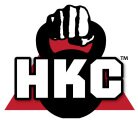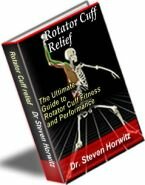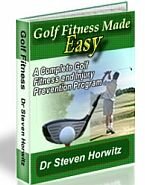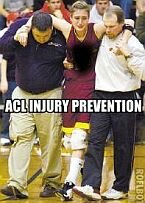Senior Athlete - How Old is Old?
SO, HOW OLD IS OLD?
In 1900 people were considered old in their 40s; in 1960 people seemed old in their 60s; but today many do not feel old even in their 80s! The oldest Olympic medallist (a rifleman) was 72. There are many professional athletes playing into their 40s.
The bad news is that there are the key physiological changes with age that have an impact on our sports performance. The good news is that with proper training these changes can be mitigated to a large degree. For those of you who have never done a proper strength and conditioning program and diet and nutrition program there is even better news; your performance can be better than it has been in decades!
The bad news first:
Here are some of the physiological changes that occur with age:
- Body fat percentage can increase from 12% - 16% to 19% - 26% by age 60-70 (in men) IF we do nothing about it.
- Muscle mass: we experience a 10% decline in muscle mass between the ages of 25 and 50 and a further 45% shrinkage by our 8th decade (about 7 pounds of muscle per decade) IF we do nothing about it. We also lose about 40% of the total number of muscle fibers by age 80 (there is nothing we can do about that) and growth hormone production diminishes (we CAN do something about that).
- Muscle power decreases by 3.5% per year and muscle strength decreases by almost 2% per year IF we do nothing about it.
- Height can decrease by about 1cm per decade after age 40 mostly due to the lose of fluid in the discs of the spine. We CAN slow this process down dramatically!
- Maximum heart rate declines by some 40 beats per minute between 20 and 60 and the heart muscle (myocardium) decreases in size as well.
- VO2 Max or the maximum volume of oxygen that the body can consume during exercise diminishes by 30% - 40% by age 65 IF we do nothing about it.
- And maybe the most important change or certainly the one we FEEL the most is the loss of elasticity in the skin, ligaments, tendons and muscles. Joints become less flexible, full range of motion more difficult and stiffness ever more apparent. And we can CERTAINLY do something about that!
30% - 50% or more of this physiological deterioration is the result of detraining (decreased or no exercise) and poor diet and nutritional habits. To stay fit, healthy and even improve our athletic performance, we must train our bodies safely and proper by combining a strength and conditioning program with a healthy diet and some important supplements. The good news will be reviewed in the next article.
Now, the good news:
Strength training is crucial to combat the increase in body fat and loss of muscle mass, power and strength. Strength training should be performed at least 2 times per week leaving at least 48-72 hours between workouts. (Note: More advanced weight training may be performed more frequently and with less time between workouts). You must pick exercises for each of the body parts: legs (calves, front thigh, rear thigh), abdomen, back, chest, shoulders, arms (biceps, triceps). Don't neglect any body parts - this will lead to imbalances in your body. Proper technique is very important - I have had too many patients come to me due to injuries caused by poor technique. Buy an anatomy book and learn the names of the muscles and what they do. This will be extremely helpful in learning how to do your exercise properly.
A quick note on machines vs. free weights. Machines can be beneficial for rehabilitation purposes when the stability of an area is in question and the stress on the area needs to be controlled. The down side of machines is that they allow movement in only one plane of motion and do not require your body to stabilize during the movement. For example, performing a machine chest press does not engage the muscles required to stabilize the entire body as with free weights. If performed with dumbbells on a stability ball, a chest press becomes a full body workout requiring the contraction of the feet, leg, thigh, abdominal, lower back, gluteal, upper back, and neck muscles as well as the chest and triceps muscles. Some machines can actually cause injury like the lower back machine in which you sit and push backwards against a pad. Research has shown this movement to be damaging to the spinal discs. This machine, often recommended as part of rehabilitation for the lower back, may eventually cause a disc herniation!
Aerobic conditioning is the next part of the puzzle. Getting your heart rate into your target zone for at least 20-30 minutes at least five days per week is a must. This will enhance your overall cardiovascular conditioning. The target zone is most easily determined by taking 220 - age= maximum heart rate. Multiply this number by 60% and 80% and this will give you your target range. Check online for target heart rate calculators that use more accurate equations. Learn to take your pulse or just buy a heart rate monitor. These monitors come with a watch and a strap that goes around your chest and sends a signal to the watch. Many of you may jog, walk on a treadmill, use an elliptical machine or ride a bike to build your conditioning. However, softball requires sprinting. This must be trained and practiced as well and is a totally different type of fitness. Believe it or not, speed can be taught! Come on over to Velocity Sports Performance and we can improve your sprinting technique.
Flexibility is the next component and for many of you may be the most important one. As we age, our tissues lose elasticity and we lose flexibility. However, if we practice different stretching techniques we can not only regain flexibility, but also become more flexible than ever. I will simply the discussion by suggesting two books, Stretching, by Bob Anderson and The Whartons' Stretch Book, by Jim and Phil Wharton. Stretching is a great review for the beginner and reviews static stretching. Static stretching is very effective at lengthening the muscles. Static stretching should be done AFTER playing sports. The key to effective static stretching is to breathe slowly and not force the stretch. Stretching is not a time to practice NO PAIN, NO GAIN. The Whartons' book reviews Active Isolated Stretching, which is the type of stretching that should be done BEFORE playing sports and can be used as part of your warm-up. Active stretching not only prepares the muscles for athletic activity, but prepares the nervous system as well. Try it and you will see great results!
Balance is the last component I will discuss. Some of the most devastating injuries to the older adult are caused slips and falls. Good balance can not only help prevent this from occurring, but when combined with good strength and flexibility, enhance your agility for playing sports as well. Try standing on one leg (in a corner so you have two walls to catch yourself if needed). Is your balance better on one side than another? Work up to one minute on each leg. Once you master that, stand on one leg and play catch (catch the ball with two hands). Don't neglect this important part of fitness!
A review of diet and nutrition is a topic for another article but suffice to say, GET OFF THE SEE FOOD DIET! Fruits, vegetables, whole grains (NOT processed carbohydrates), and lean meat are the foundation of a good diet. Beneficial supplements are: a good multi-vitamin/mineral, glucosamine and chondroitin for arthritis, MSM (also for the joints), extra vitamin C, and omega-3 (fish) oils. ALWAYS check with your pharmacist to be sure there are no dangerous drug/supplement interactions!
So, how old would you think you were if you didn't know how old you are?
|
The Ultimate Nutritional Lie Detector Test LEARN MORE 
|
Kettlebell Rehab

Click Here
To See How Kettlebells will transform your body!
Vortex Rehab

Click Here
To See How This
Revolutionary Machine
Can Help You!
Partner / Support

Loans up to 3 months - fast cash advances for up to 90 days and up to $5,000!


















